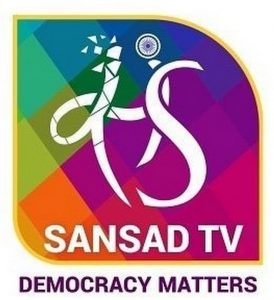[ad_1]
Introduction:
Mother tongue has a very powerful impact in the formation of the individual. A child’s first comprehension of the world around him, the learning of concepts and skills and his perception of existence, starts with the language that is first taught to him – his Mother Tongue. When a person speaks their Mother Tongue, a direct connection establishes between heart, brain and tongue Linguistic diversity is increasingly threatened as more and more languages disappear. Globally around 40 per cent of the population does not have access to an education in a language they speak or understand. The theme of this year’s International Mother Language Day is focused on the use of Technology for Multilingual Learning. According to the Language Census India is home to 19,500 languages or dialects, of which 121 languages are spoken by 10,000 or more people in our country. National Education Policy released in 2020 has strongly advocated imparting early education in regional language or mother tongue.
Effectiveness of Mother Tongue:
- Mother tongue is the very first language that one hears, understands and gets familiar with. Thus, it plays important role in shaping feelings, emotions and thought processes.
- Use of mother language helps one in getting comfortable with his/her cultural identity.
- Maintaining mother languages is necessary for preserving cultural heritage and identity.
- Dissemination of mother languages encourages linguistic diversity, thus inspires solidarity based on understanding, tolerance, and dialogue.
- When languages disappear, the world loses a rich tapestry of cultural identity.
- Opportunities, traditions, memory, unique modes of thinking and expression, valuable resourcesfor ensuring a better future also get lost.
Impediments to implement mother tongue in early learning:
- Limited learning environment: Learning materials refer to items that aid in the learning process. Books may be a necessary material, but books are not enough by themselves.
- Language transfer designates the interference of the mother tongue in second language learning.
- One of the barriers in mother language learning is most of the students; do not get better language experience from their primary classroom.
- Obstacles arise when there is lack of understanding between a context where a learner lives and the difficulty of a language task given to the students.
- Untrained teachers: Most of the teachers do not know about how to introduce a curriculum in native language to the student according to their interest.
- Lack of interest and motivation are the most important obstacles in learning in mother tongue.
- Scope: The heavy dominance of English in higher education leaves limited scope for native language early education.
Technology for multilingual learning:
- International Mother Language Day 2022 was celebrated across the world with the theme, ‘Using technology for multilingual learning: Challenges and opportunities’.
- It highlighted the role of technology in developing multilingual educationand in supporting the development of quality teaching and learning for all.
- Technology has the potential to address some of the greatest challenges in education today.
- It can accelerate efforts towards ensuring equitable and inclusive lifelong learning opportunities for allif it is guided by the core principles of inclusion and equity.
- Multilingual educationbased on mother tongue is a key component of inclusion in education.
- The fight for local languages to be on the web has been supported by tech giants like Amazon and Facebook, as their products are available in a few local languages.
- Google Translate has brought numerous regional cultures closer together. The translations are undertaken by AI and native language experts who have experience and a solid academic background.
Way forward:
- With the help of technology, every mother language can be maintained. Google’s Project Navlekha in India is an example. The project is aimed at increasing the online content in Indian local languages.
- People should be made aware of the professional viability of pursuing degrees in native languages. With a degree in a native language, one can take up professions like Language Expert, Translators, and Tourist-Guide etc.
- Also to maintain any native language, it is necessary that it is spoken. Use of native languages at homes, schools, and offices should be encouraged.
- The Upper House of India has an arrangement for interpretation of 22 languages i.e. members are encouraged to speak in their native languages.
- Countries like France, Germany, Italy, China have developed their mother languages as a powerful medium. Other countries need to learn from these to preserve their cultural and linguistic identity.
Conclusion:
It is our strength that we have many languages and dialects. All other languages are important. But one should respect, learn and understand their mother tongue. According a hegemonic role to the “most-spoken” language in the country may promote cultural homogenisation, but that is hardly desirable in a country with a diverse population, a plural ethos and is a cauldron of many languages and cultures. Further, national identity cannot be linked to any one language, as it is, by definition, something that transcends linguistic and regional differences. The need today is to respect, protect and nurture diversity of our nation so that unity is ensured.
[ad_2]


